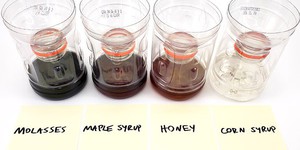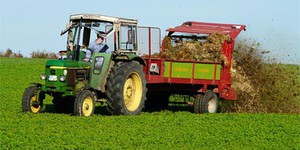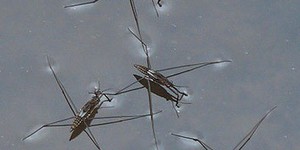Others Like “Does Body Size Matter?” (top 20 results)
|
Do you really catch more flies with honey than with vinegar? Do an experiment to find out! Watch the video above to learn how to make a simple homemade fly trap using a plastic bottle. Then, experiment to discover which bait attracts the most flies. You can try a variety of liquids, and you can also use solid bait like rotting food or meat, but you will need to add some water so the flies drown. A drop of soap can help break the surface tension of the water, making it easier for the flies to…
Read more
When you go to the beach, you may not know if the beach is natural or man-made. The popularity of sandy beaches prompted developers in the past to bring in sand to cover rocky shorelines and turn them into more popular sandy beaches. However, the actions of the tides, currents and waves carried the extra sand out into the reef, endangering the reef and the creatures living on it. You can use a water table to conduct experiments with sand movements and reefs. How is sand moved by water? How…
Read more
Do you like skeletons? One of the more interesting jobs at a natural history museum is the creation and care of the skeletons and bones. How do the curators clean and put together the skeletons? Many curators use the carrion beetle, Dermestes vulpinus, to quickly clean off the dead animal tissue from a corpse to reveal the skeleton. These insects do such a good job that sometimes the skeleton remains intact! Another method is to slow cook the carcass until the meat falls off. You can use…
Read more
One thing that all living things have in common is that they grow through cell division. How is this growth regulated? Sometimes growth occurs when it is not supposed to, leading to cancer. Scientists are trying to discover how growth is regulated, hoping to find potential cures for cancer. One idea is that cells keep track of growth using special regions of the chromosome called "telomeres" that count how many divisions a cell has made. If this is true, then growth, cell division and age are…
Read more
You can study hazards that affect coastal areas. What geological forces cause a tsunami? A tsunami (Japanese for 'harbor wave') is a wave generated by an undersea earthquake, landslip, or volcanic eruption. You can demonstrate what causes a tsunami by simulating an undersea earthquake with a water table. How does the depth of water effect the height of the wave? Do different slopes of bottom change the speed of the wave? Visit the USGS Coastal and Marine Geology Program to find out about…
Read more
All animals need to respond to changes in their immediate environment. The sensory structures of animals are each made to respond to distinct types of sensory stimuli: touch, taste, sound, light and smell. How are these stimuli received? Different animals have different strategies for receiving stimuli and develop specialized structures for doing so. Antennae, ears, noses, tongues, eyes, eye spots, hairs and bristles are all examples of sensory structures used by different animals to sense…
Read more
Many people routinely use fertilizer for crops, gardens, and lawns. What people don't know is that each time they apply fertilizer, the fertilizer seeps through the soil into the water table. This can eventually lead to the contamination of a local water source, like a stream, pond, lake, bay, or ocean. This is an especially big problem for agricultural practices that frequently use large amounts of fertilizer on fields that are connected by irrigation channels. The run-off of fertilizer…
Read more
Water striders (also called water bugs, pond skippers, etc.) are insects that can hop around on the surface of water (Figure 1). Unlike boats or other floating objects that are partially submerged and held up by the resulting buoyant force, water striders are held up by surface tension.
Figure 1. Water striders (image credit Isaka Yoji).
You can build your own water striders using thin wire (Figure 2 and following video). Do some background…
Read more
Ladybugs are common insects in North American gardens that prey upon aphids, making them all the rage in biological pest control. Ladybugs can be bred in captivity making them a good insect to study. Just chop off an aphid infested plant stem for food, make a water soaked cotton ball for water, and add to a small plastic container with a lid to make a breeding box. You can use ladybugs collected from the wild, or buy ladybugs from your local nursery. The most common species is the 12-spotted…
Read more
Animals have different levels of activity depending upon their habitat, metabolism and behavior. Diurnal animals are more active during the day. Nocturnal animals are more active at night. Being diurnal or nocturnal may have different advantages for different animals. For example, desert animals tend to be nocturnal so they can stay cool and escape the desert heat present during the day. What types of diurnal and nocturnal animals are common in your area? You can set out a small trap to…
Read more
|
Explore Our Science Videos
Basic Circuits Kit: Pencil Resistors
How to make an anemometer (wind speed meter)
Valentine's Day Candy Delivery Robot









